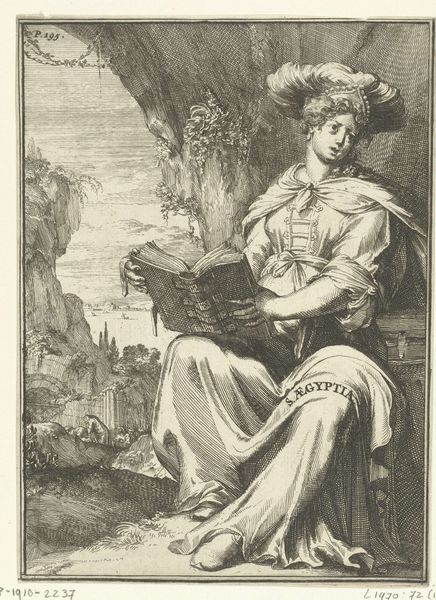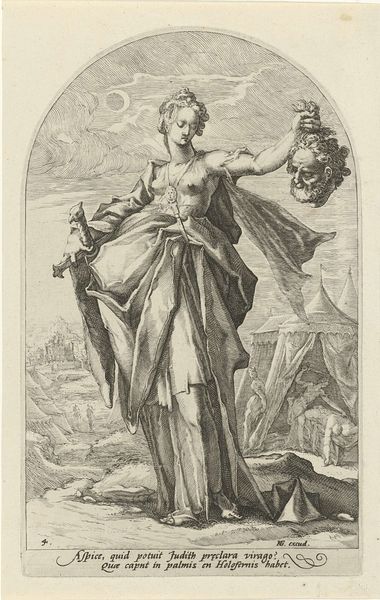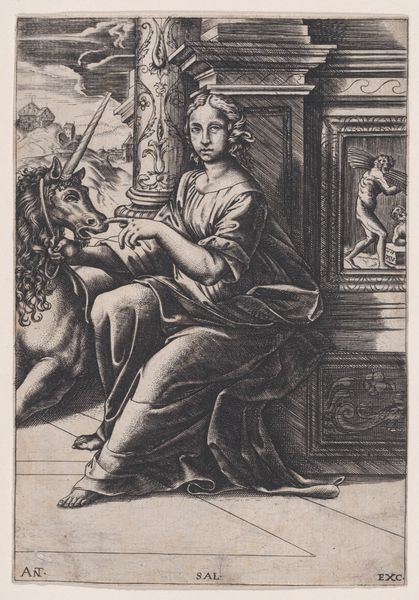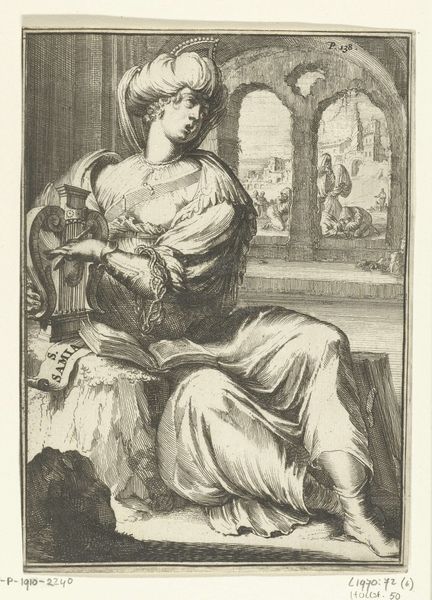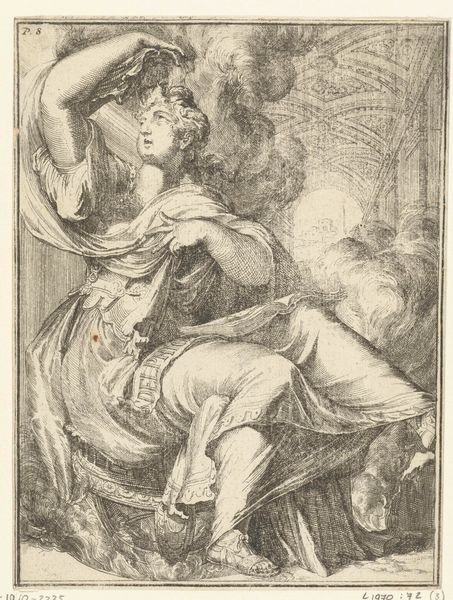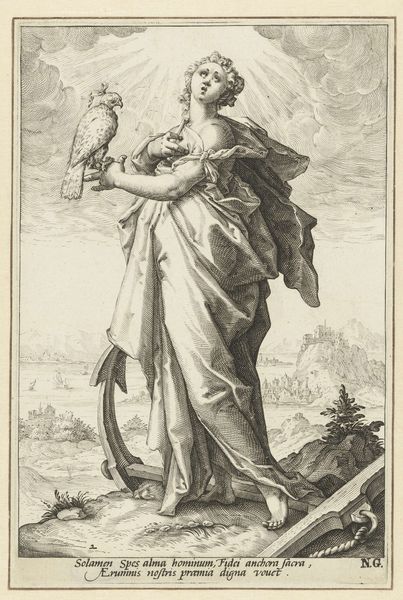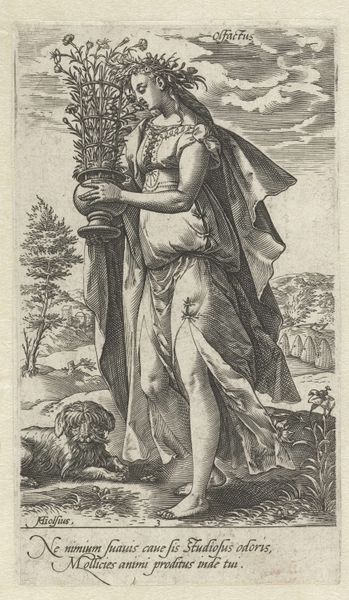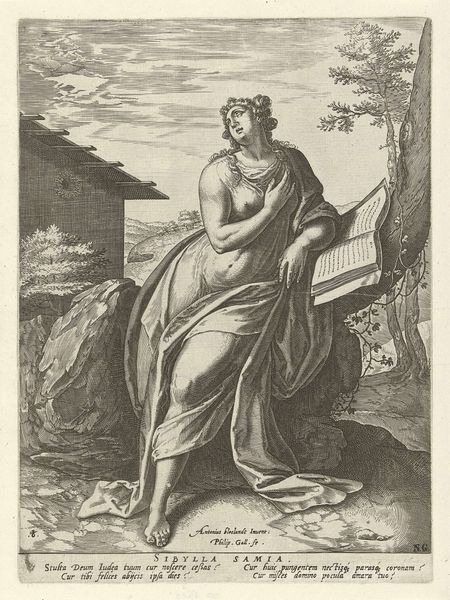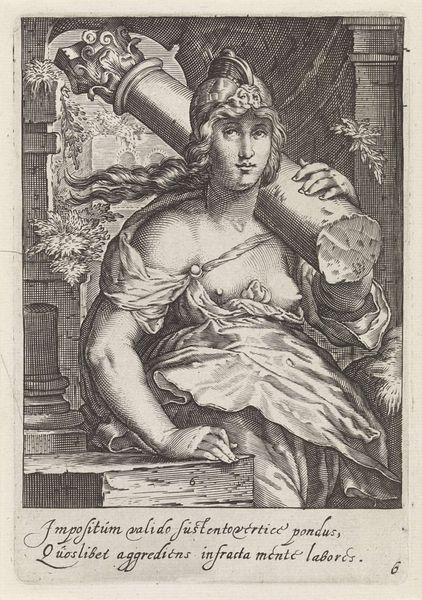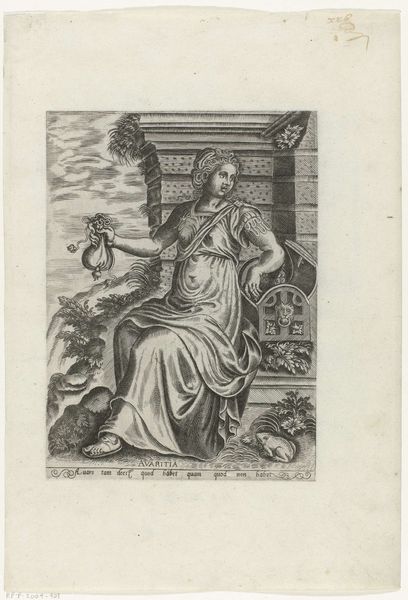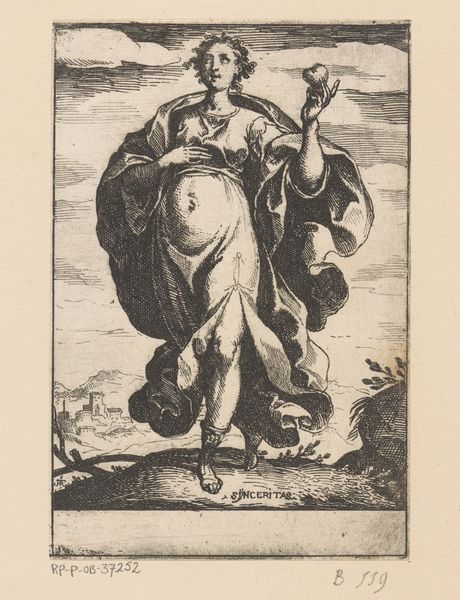
engraving
#
portrait
#
baroque
#
landscape
#
figuration
#
history-painting
#
engraving
Dimensions: height 170 mm, width 128 mm
Copyright: Rijks Museum: Open Domain
This engraving of the Libyan Sibyl was made by Romeyn de Hooghe, likely in the late 17th century, using the traditional method of etching lines into a metal plate, which is then inked and printed. The image presents the Sibyl as an allegorical figure, adorned with a turban and laurel, while she is in the act of prophesying, but it is the mode of production itself that carries significant cultural weight. Engraving was a skilled craft, demanding precision and control. Its prevalence during this era reflects a society increasingly reliant on print for disseminating knowledge and shaping public opinion. Consider the labor involved in creating this image: the meticulous work of the engraver, the production of paper, and the distribution of the final print. Each step involved human skill and effort, contributing to a network of production and consumption. By recognizing the value of materials, processes, and social context, we gain a fuller appreciation for the rich cultural significance embedded within this seemingly simple engraving.
Comments
No comments
Be the first to comment and join the conversation on the ultimate creative platform.
